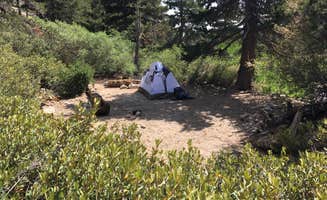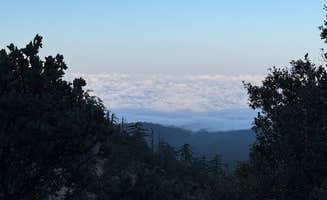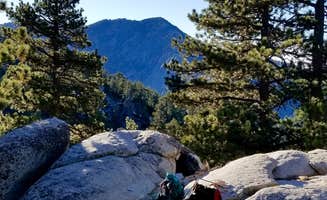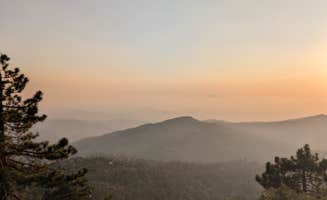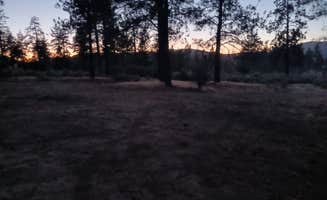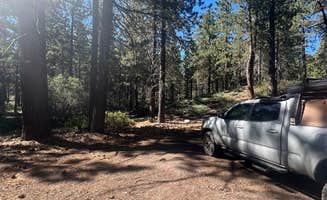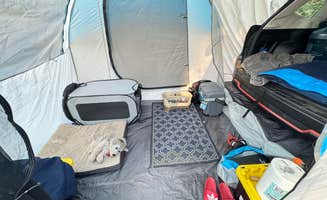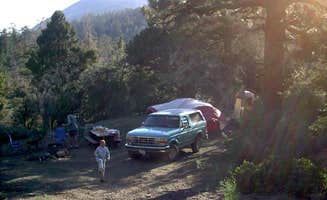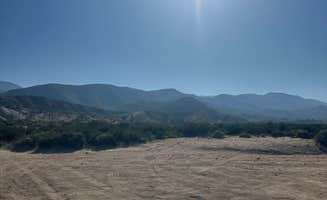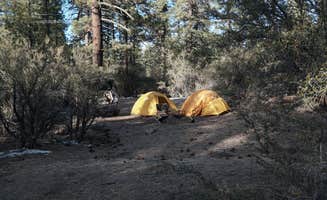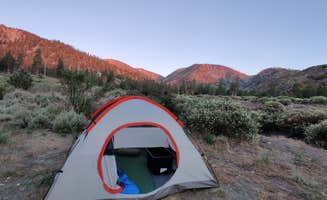Dispersed camping near Perris, California offers multiple options within San Bernardino National Forest at elevations ranging from 5,000 to 11,500 feet. The region experiences seasonal temperature variations, with summer highs reaching 90°F at lower elevations while higher wilderness camps can drop below freezing at night even in summer months. Most primitive sites require careful planning for water needs since natural sources are limited and frequently dry during late summer.
What to do
Hiking to summit views: At Vivian Creek Camp, campers can access the trail to San Gorgonio peak. "This is a good base camp for the summit. You are a good distance from the trail so it doesn't seem to be a bother as far as noise," notes Brittany N. The trail requires a permit and offers multiple camping locations at different elevations.
Wildlife observation: The forest areas around East Flats provide opportunities to see local wildlife. "Saw multiple deer walking by our site," reports Ciara W., while several campers mention smaller creatures. The area supports diverse animal populations including deer, lizards, snakes, and numerous bird species.
Hammock camping: Several forest sites have sufficient tree coverage for hammocks. At Holcomb Valley Climbers Camp, one camper mentioned the area "has enough trees for a hammock," making it ideal for those who prefer off-ground sleeping arrangements. The sandy soil at many sites makes hammock camping more comfortable than tent placement in some locations.
What campers like
Cell service accessibility: Unlike many wilderness areas, several dispersed camping locations near Perris maintain usable cellular connections. At East Flats, Patrizia H. noted, "I even have internet (Telekom)!" while another camper mentioned "great cell service" despite the remote location. This makes these spots viable for remote workers needing to stay connected.
Cooler temperatures: The elevation gain provides relief from valley heat, particularly during summer months. At South Ridge Yellow Post Sites, Tony B. commented that "elevation is high enough that temperatures were very enjoyable (mid 80's)," making camping possible even during hotter periods when valley temperatures become uncomfortable.
Varied site privacy: Campers frequently mention the separation between sites as a positive feature. At Mill Creek Dispersed Camping, a reviewer noted sites are "spaced out so you may not see your neighbors from your site," while another mentioned there are "some spots more secluded than others." This variability allows campers to select locations based on their privacy preferences.
What you should know
Vehicle requirements: Many dispersed camping areas have rough access roads requiring appropriate vehicles. Francisco F. warns about Mill Creek Dispersed Camping: "The road up to the actual spot is gravel, with lots of potholes and washboard areas, which would make it difficult for an RV." Several sites require high-clearance vehicles, especially after rain.
Insect preparation: Mosquitoes are commonly reported at dusk in forested areas. Kique S. recommends at South Ridge Yellow Post Sites: "I recommend you bring extra mosquito repellent." Insect activity increases near water sources and during warmer months.
Navigation challenges: Limited signage makes navigation difficult without preparation. Multiple reviews mention the importance of offline maps. Several campers report driving past their intended sites due to poor markings, particularly in areas with multiple forest roads and junctions.
Tips for camping with families
Exploration opportunities: Natural features near campsites provide engagement for children. At Thomas Mountain Road, the shaded areas and open spaces give kids room to explore safely. One family at Holcomb Valley mentioned "kids loved being able to explore, but they were covered in sand/dirt by the end of the trip."
Weather preparation: Temperature fluctuations require appropriate clothing and gear. At higher elevation sites like San Gorgonio Summit Camp, nighttime temperatures drop significantly even in summer. Pack layers for all family members to accommodate daily temperature variations that can exceed 30 degrees.
Water planning: No potable water exists at dispersed sites, requiring families to bring sufficient supplies. Each person typically needs 1-2 gallons per day depending on activities and temperatures. Most creek water sources require filtration and may be seasonal or unreliable during dry periods.
Tips from RVers
Size limitations: Larger RVs face significant access challenges at most dispersed sites. At East Flats, Jesse W. noted his "34 foot Class A motorhome" could access the site, but specified that suitable spots were limited to "within the first 1/4 mile" where "roads are a bit rough with rock and drainage ditches." Another reviewer at the same location mentioned their "40' trailer had zero issues" but emphasized staying on main access routes.
Leveling requirements: Many sites feature uneven terrain requiring leveling blocks. RVers frequently mention the need for leveling equipment at forest sites where natural contours create slopes. Several reviews recommend bringing extra leveling blocks even for sites described as "flat."
Dust management: Unpaved roads create significant dust issues for RVers. Ciara W. mentioned at East Flats that the area was "super dusty" and "easy to drag in dust and very annoying." Several campers recommend positioning RVs away from main roads and bringing door mats to reduce dust tracking.


